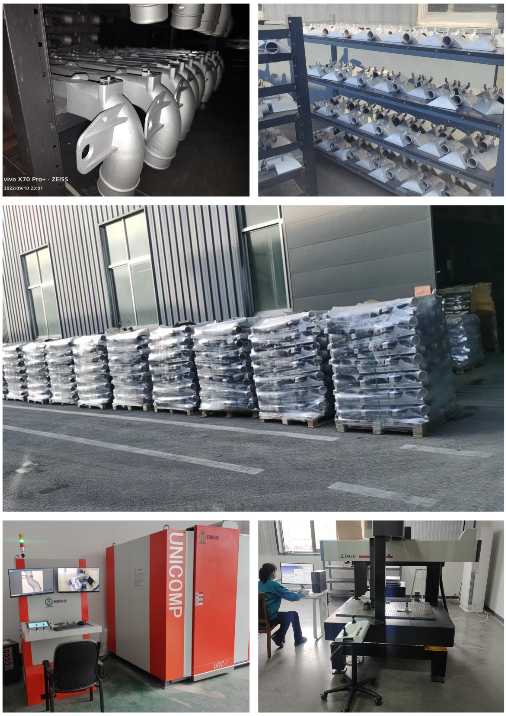Introduction
In the world of aluminium casting, achieving the right balance between quality, cost, and production efficiency is essential. One of the key factors that impact the final product’s performance is the tolerance—the allowable deviation from a specified dimension in the casting process. Whether you’re producing small intricate components or large structural parts, adhering to aluminium casting tolerance standards ensures that the parts meet the required specifications for strength, fit, and function.
In this article, we’ll explore the importance of aluminium casting tolerances, the various standards that apply, and how to ensure your castings meet the required quality levels.
What Are Aluminium Casting Tolerances?
In aluminium casting, a tolerance refers to the permissible variation in the dimensions or physical properties of a casting from its design specifications. Since the casting process is not perfect, tolerances are built into the design to account for minor variations in dimensions, surface finish, and other physical characteristics.
These tolerances play a crucial role in determining the final quality and performance of the part. For instance, in the automotive or aerospace industries, even a small deviation in part dimensions could affect the overall functionality or safety of the product.
Why Are Aluminium Casting Tolerances Important?
Understanding and implementing proper tolerance standards in aluminium casting is important for several reasons:
- Fit and Assembly: Tolerances ensure that the cast parts fit together correctly and function as intended. In industries like automotive and aerospace, precision is vital for assembly lines and mechanical systems.
- Minimized Waste: Adhering to tolerance standards reduces the need for excessive post-casting machining, which saves time and material costs.
- Reduced Defects: Properly defined tolerances ensure that parts are manufactured within acceptable limits, reducing defects and increasing product reliability.
- Regulatory Compliance: In many industries, especially those dealing with critical applications (like aerospace or medical devices), cast parts need to meet specific standards to comply with safety regulations.
- Cost Control: Tighter tolerances often result in higher costs due to the need for more precise molds and additional machining. Understanding the balance between tolerances and costs helps manufacturers optimize production processes.
Common Aluminium Casting Tolerance Standards
Aluminium casting tolerances vary depending on the casting method, the alloy used, and the application. Here are some of the most widely recognized tolerance standards and guidelines that govern aluminium casting:
1. ISO 8062: 2007 – Geometrical Product Specifications (GPS)
ISO 8062 is the primary international standard that governs casting tolerances. It defines the general tolerances for dimensions, shape, and surface finish of castings. The standard is based on the class of casting, which helps determine the allowable deviations.
- ISO 8062-3: This part of the standard is used for defining tolerances on cast parts, based on their complexity and size.
- Tolerance Classes: ISO 8062 classifies castings into different tolerance classes ranging from CT1 (tightest tolerances) to CT9 (loose tolerances), based on the type of casting and its application.
2. ASTM B17 – Standard Specification for Aluminum Castings
The ASTM B17 standard specifies casting requirements for aluminium in several forms, including sand casting, die casting, and permanent mold casting. It sets the tolerance levels based on the type of casting and the material specification, which are essential for manufacturers working with aluminium cast parts.
- The tolerance requirements are specified for sand casting, die casting, and permanent mold casting, with more stringent tolerances typically applied to die castings due to their higher precision.
3. AFS 4000 – American Foundry Society Standards
The AFS (American Foundry Society) provides detailed tolerance guidelines for the foundry industry, helping manufacturers adhere to quality standards. AFS 4000 covers dimensional tolerances for castings, providing useful information on both sand castings and die castings.
- It sets clear guidelines for the allowable variations in dimensions, especially in relation to casting process type, pattern material, and moulding technique.
4. DIN 16901 – German Standard for Aluminium Castings
The DIN (Deutsches Institut für Normung) standard for aluminium castings sets specifications for tolerances, testing methods, and the properties of cast aluminium components. The DIN 16901 standard is widely used in the European Union, providing clear tolerance limits for various aluminium casting processes.
- It categorizes castings into different tolerance classes and includes more detailed specifications for small and large castings.
Aluminium Casting Tolerance Guidelines Based on Casting Methods
The type of casting method used significantly influences the achievable tolerances. Here’s a breakdown of the tolerance ranges based on different casting processes:
1. Sand Casting
- General Tolerances: ± 0.5% to ± 2.0% of the casting dimension.
- Sand casting is known for its relatively loose tolerances due to the variability in mold formation. However, the process is cost-effective for producing larger quantities of parts, especially when high precision is not critical.
2. Die Casting
- General Tolerances: ± 0.2 mm to ± 0.5 mm for small parts (depending on size and complexity).
- Tighter tolerances: Die casting offers much better precision and can achieve tighter tolerances than sand casting due to the high-pressure injection of molten aluminium into a die.
3. Gravity Die Casting
- General Tolerances: ± 0.5 mm for parts up to 50 mm in size, and ± 1.0 mm for larger parts.
- Gravity die casting offers more precision than sand casting, with more consistent results due to the controlled pouring process.
4. Low Pressure Die Casting
- General Tolerances: Similar to die casting, typically ± 0.2 mm to ± 0.5 mm.
- This method is often used for larger parts, and while it offers tighter tolerances, it is particularly effective for producing high-quality, medium-volume castings.
How to Control Tolerances in Aluminium Casting
- Proper Mold Design: Ensuring that molds are designed accurately is crucial for achieving the desired tolerances. Precise machining and finishing of the mold cavity help minimize deviations in the final casting.
- Selecting the Right Casting Process: Depending on the precision required, choosing between sand casting, die casting, and gravity die casting can significantly affect the tolerance limits.
- Material Selection: The choice of alloy and its properties—such as shrinkage rates and cooling speeds—can impact the final tolerance. For instance, alloys with lower shrinkage rates tend to offer better dimensional stability.
- Post-Casting Machining: In cases where casting tolerances are not tight enough, secondary machining (such as milling or grinding) can help achieve the required precision.
- Quality Control and Testing: Regular quality checks, including dimensional inspections and metallurgical tests, ensure that the castings meet the specified tolerances. Using advanced measuring equipment such as coordinate measuring machines (CMM) can improve the accuracy of these inspections.
Conclusion
Understanding aluminium casting tolerance standards is critical for manufacturers who want to ensure the quality and precision of their cast parts. Whether you’re producing parts for automotive, aerospace, or industrial applications, adhering to the right standards will help you achieve high-performance components that meet the required specifications.
By carefully selecting the right alloy, casting process, and managing your tolerances, you can deliver high-quality, cost-effective products to your customers, while maintaining tight control over production efficiency.
If you need help ensuring your aluminium castings meet the highest standards of quality and precision, feel free to contact us today!
Contact Us for Aluminium Casting Solutions
We specialize in providing high-quality aluminium castings that meet strict tolerance standards.
Or Email Us for more information.

